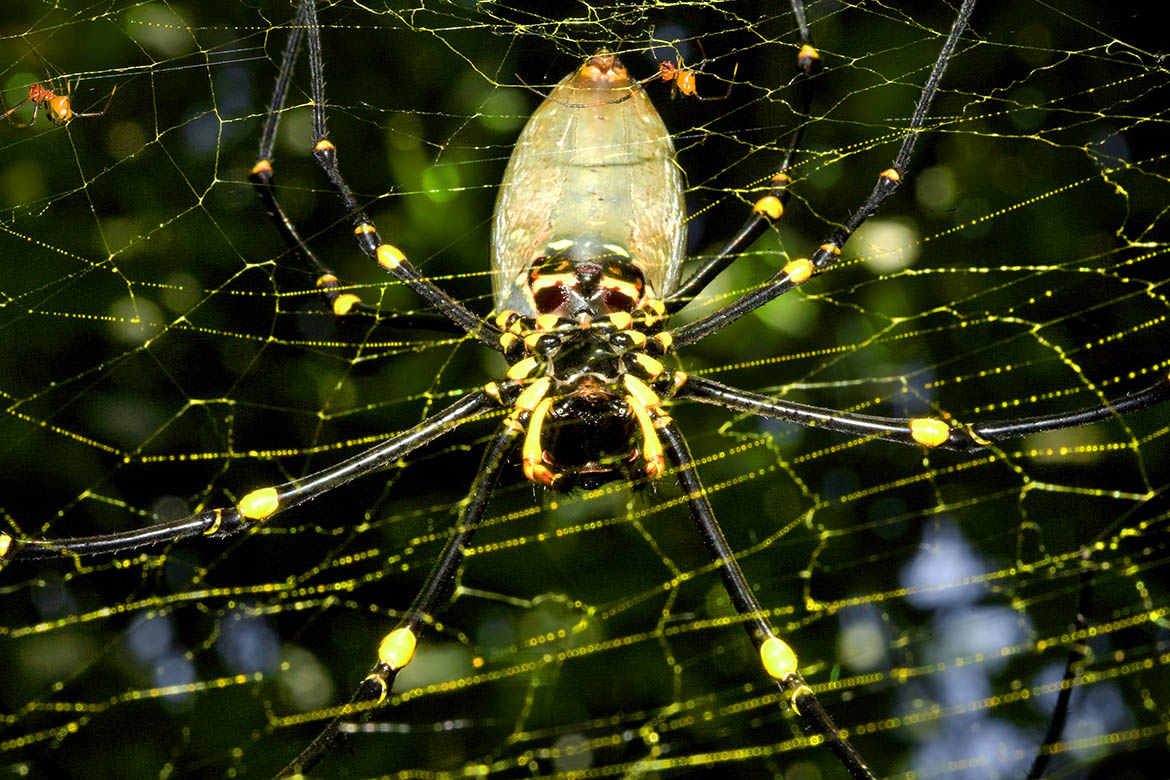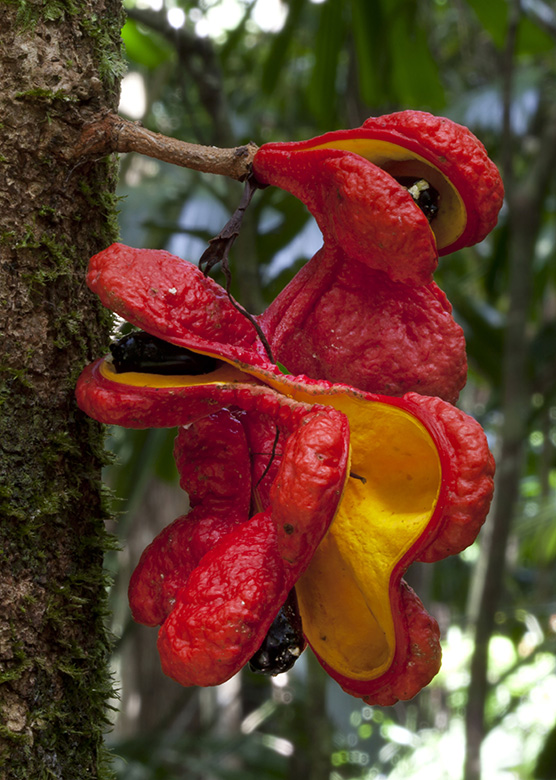Vibrancy of Yellow
As a recurring rainforest theme, the vibrancy of yellow stands out with brazen distinction. The yellow blooms of Golden Penda – Xanthostemon chrysanthum (F.Muell.) radiate with regal splendour. Under the influence of blue-dominated low-light within the rainforest understory, protoplasmic Slime Mould – Physarum polycephalum (Schwein) streams beautifully bright-yellow and in terms of network intricacy and speed of motility, impresses with its loveliness just as quickly as it reveals its delicacy with the desiccating impact of increased light.
The bright-yellow ventral features of the Giant Golden Orb-weaving Spider – Nephila pilipes (Fabricius, 1793) are particularly attractive to the visual sensitivities of flying insects, ensnaring them in the enormity of their golden orb-webs. Small birds also fall victim to the visual allure of these dazzling yellow temptations.
An uncharacteristic nocturnal foray is captured in torchlight, revealing a mobile strand of yellow, underpinning the graceful movements of an arboreal Common Tree Snake – Dendrelaphis punctulatus (Gray, 1826). Nearby, twin yellow breasts of fledgling Lemon-bellied Flycatchers – Microeca flavigastor (Gould, 1843) are illuminated, delighting their discoverer with their allied loveliness, but equally impressing with their roost-selection on the distal end of an understory branch that ensures any predatory advance of tree-climbing reptiles will give ample forewarning through vibration.
Yellow highlights and enormous compound-eyes expose the world’s largest dragonfly, the Giant Petaltail – Petalura intengissima (Tillyard, 1908), found roosting off the tip of an isolated leaf. A little distance away, a pair of Wompoo Fruit Doves –Ptilinopus magnificus (Temminck, 1821) is brought to light by the vibrancy of their twin yellow posteriors, beautifully complementing the greens and purples of their greater proportions.
On an elevated root near the edge of Cooper Creek, a male Northern Stoney Creek Tree Frog – Ranoidea jungguy (Donnellan & Mahony, 2004) beams with bright-yellow virility, against the more subdued tones of the larger, brown female. Of similar intensity, a vivid yellow caterpillar of the Four O’Clock Moth – Dysphania numana (Cramer, 1779) stands chromatically and posturally proud on a branch of a Corky Bark – Carallia brachiata ((Lour.) Merrill, 1920).
Red and yellow combine to optimise conspicuousness in the light environment of the rainforest interior. The Golden-scruffy Collybia – Cyptotrama asprata (Berk.) Redhead & Ginns (1980), glows as a smouldering ember against the earthy tones of a fallen tree-trunk, whilst the early instar-nymph of an undescribed Assassin Bug, contradicts its diminutive size with flare of brazen intensity. Broadcasting off the side of its tree-trunk to the enthusiasms of potential vectors, the red-hot spiralling of the Scarlet Bean – Archidendron ramiflorum (F.Muell.) Kostermans, A.G.J.H. (1956) opens to reveal glossy black seeds within a bed of blistering yellow.












